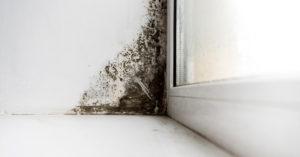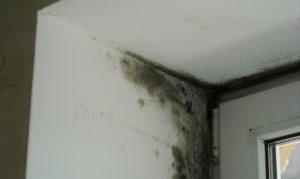Mold on the slopes of plastic windows: causes and consequences
Metal-plastic windows, which replaced wooden ones, quickly gained wide popularity among consumers. They look great and do the job perfectly. But, after installing plastic windows, people often encounter such an unpleasant phenomenon as mold on slopes.
Content
Causes of mold on plastic windows
Mold spores easily adhere to various porous surfaces such as:
- concrete;

- plaster;
- drywall.
Having settled in such a shelter, the fungus can wait for months for the appearance of favorable conditions. After the air temperature and humidity become suitable for the development of spores, mold becomes noticeable on the surface of smooth plastic.
The main reasons for the development fungal microflora on plastic windows are:
- incorrect design and mistakes made during the construction of the building;
- improperly equipped mounting seams and slopes;
- building flooding;
- high humidity;
- untimely maintenance and repair of window structures;
- room temperature from +25 to +35 degrees.
Why is mold dangerous?
Mold can be painted in a wide variety of shades, but the greatest danger is black mold. In addition to a spoiled appearance, this fungus can cause various diseases, such as:
- dry cough;
- pneumonia;
- headache;
- rash on the skin.
How to get rid of mold on slopes
In order for the fungus on window structures to no longer be a problem, it is necessary to eliminate the main reason for its appearance - the lack of tightness between the window opening and the frame. To do this, follow a series of sequential steps.
As you know, mold spores are perfectly fixed in porous plaster and only such a radical method as dismantling will help to get rid of them completely.
In order to guarantee tightness between the wall and the frame, it is necessary to foam all existing walls with high quality. At the same time, you should not save on the amount of mounting foam, otherwise after some time the mold will reappear.
After all the cracks are filled with foam, it is necessary to putty or plaster them from the street side. This will allow you to forget about problems with tightness for a long time.
Internal slopes are best made of plastic, as the hidden remains of fungal spores in the plaster can again get out. Plastic in this case will simply be treated with a special antifungal agent, and the plaster will have to be dismantled.
Prevention of mold on slopes
Condensation is the first signal that mold is about to appear. Having found it on plastic windows after installation, you must immediately take all necessary measures and prevent the development of the fungus:
- check the condition of the ventilation openings and ensure normal air circulation in the room;
- prevent an increase in air humidity in the rooms;
- regularly ventilate the room;
- promptly repair faulty window frames and fittings, as well as replace worn-out seals.
Conclusion
Mold that has appeared on the slopes can not only spoil the appearance of the window structure, but also cause serious harm to the health of people living in this house. Therefore, it is very important to maintain a normal level of humidity in the room, and to ensure the circulation of fresh air, otherwise it will not be easy to cope with the spread of mold.

